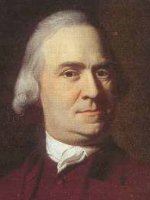When the Stamp Act Congress Convened
As proposed by the Massachusetts House of Representatives back in June, this was a convention of delegates from the colonial legislatures of North America to come up with a common response to the Stamp Act.
Royal governors had done their best to stymie legislatures’ plans to participate in the congress, mostly by declining to convene those legislatures in time to choose delegates.
As a result, in Delaware, New York, and New Jersey legislative leaders chose delegates through committees or in meetings held without the governors’ approval. Other colonies, including the oldest and most populous, Virginia, couldn’t finagle a way to send anyone. Out of fourteen colonial legislatures invited (including Nova Scotia), only nine had representatives at the congress.
Massachusetts was one of those nine, but royal governor Francis Bernard was confident that he had things under control, as he reported to the Board of Trade in London on 8 July 1765:
It was impossible to oppose this Measure [for the congress] to any good purpose: and therefore the friends of Government took the lead in it, & have kept it in their hands; in pursuance of which, of the Committee appointed by this house to meet the other Committees at New York on the first of Octr. next, Two of the three are fast friends to Government & prudent & discreet men, such as I am assured will never consent to any undutiful or improper applications to the Government of great Britain. It is the general Opinion that nothing will be done in consequence of this intended Congress: but I hope I may promise myself that this province will act no indecent part therein.The three Massachusetts delegates were all members of the committee that had recommended proposing the congress:
- James Otis, Jr., of Barnstable, the lawyer who had become leader of Massachusetts’s opposition.
- Oliver Partridge of Hatfield, veteran of the Albany Congress.
- Timothy Ruggles of Hardwick, a former house speaker and brigadier of the militia.
TOMORROW: America’s first national election?









